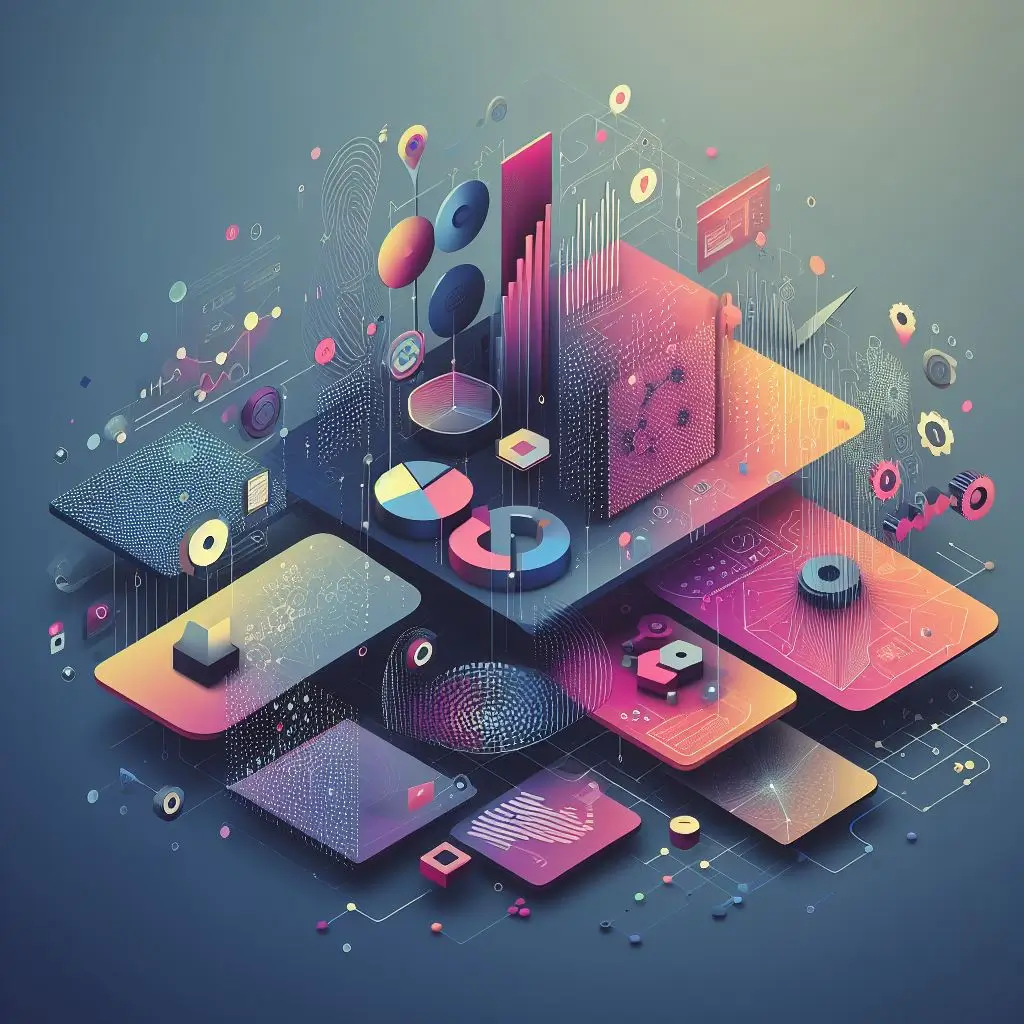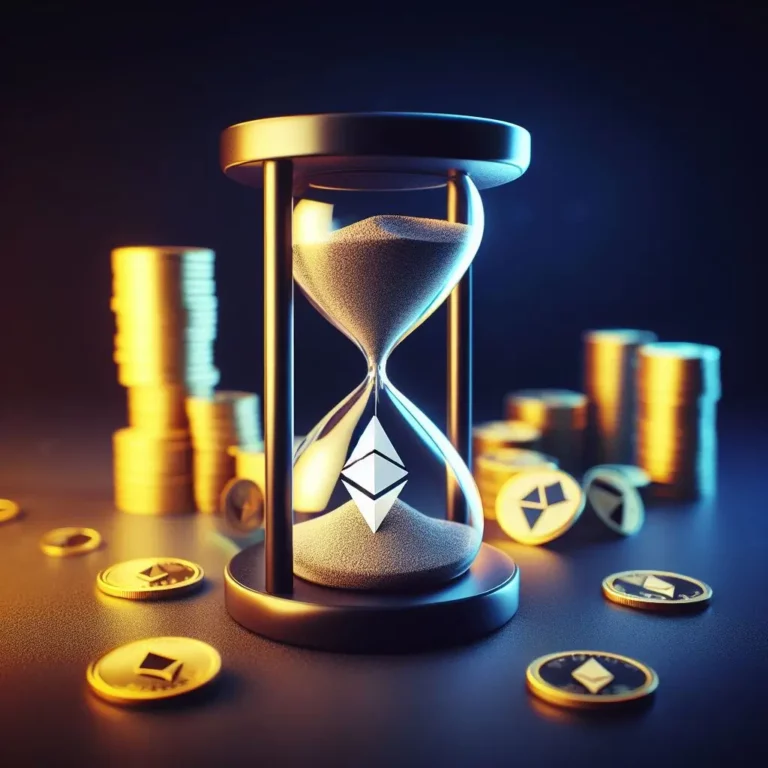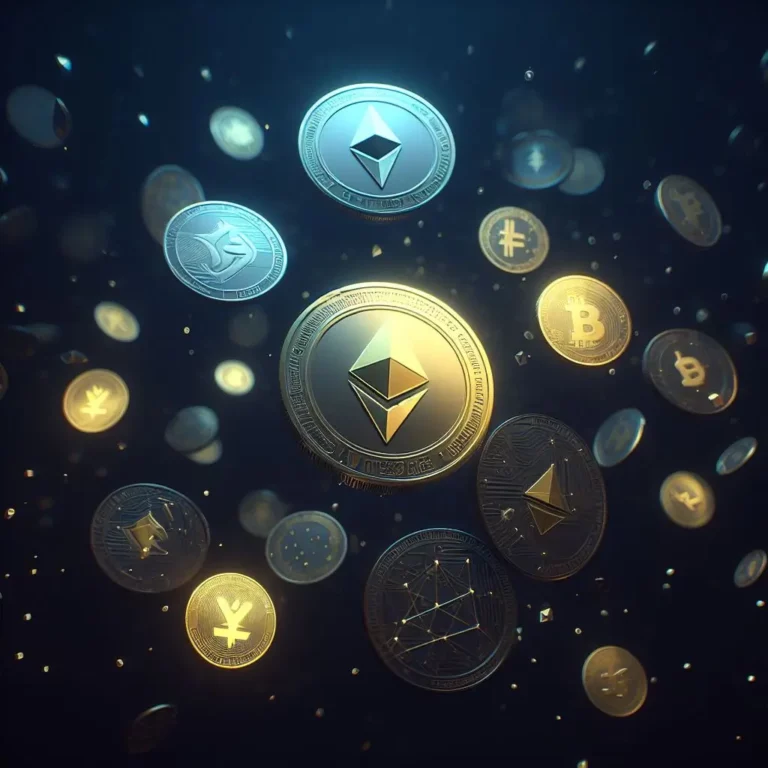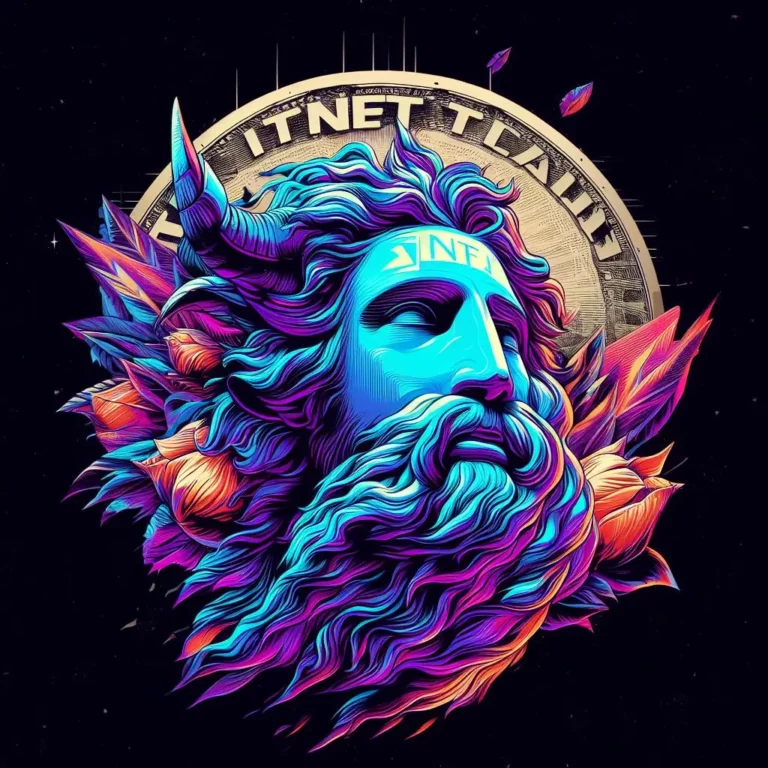Part 1: Introduction
In the fast-paced world of cryptocurrency and blockchain technology, a new term has been making headlines and capturing the imagination of many: NFTs, or Non-Fungible Tokens. If you’re new to this space, you might wonder what NFTs are and why they are creating such a buzz.
In this article, we will unravel the mysteries of NFTs in the most straightforward way possible. We will begin by defining NFTs and explore why they have become essential in the digital age. By the end of this journey, you’ll have a clear understanding of how NFTs work, the different types that exist, and the remarkable ways they are being used.
What are NFTs?
Let’s start at the beginning. NFTs, or Non-Fungible Tokens, are a type of digital asset. But what makes them stand out is their uniqueness. Unlike cryptocurrencies such as Bitcoin or Ethereum, which are interchangeable and have the same value regardless of which one you own, NFTs are one-of-a-kind. Each NFT is distinct, with its own set of characteristics that differentiate it from any other token.
Why are NFTs important?
The importance of NFTs lies in their ability to represent ownership and authenticity in the digital realm. They have revolutionized the way we think about digital assets, enabling creators and collectors to establish true ownership of digital content, whether it’s art, music, virtual real estate, or even tweets.
How do NFTs work?
NFTs are made possible by blockchain technology, the underlying infrastructure of cryptocurrencies. The blockchain ensures that each NFT is unique and cannot be replicated or altered. This technology provides a transparent and tamper-proof record of ownership, which is essential in the world of digital assets.
Different types of NFTs
NFTs are not limited to a single type. They can represent a wide range of digital and physical items, from digital art and collectibles to real estate and even domain names. The diversity of NFTs is part of what makes them so intriguing.
Use cases for NFTs
So, how are NFTs being used in the real world? NFTs have found their way into various industries, impacting how we create, own, and trade digital assets. In the next sections, we will delve deeper into the world of NFTs, exploring their applications and significance in more detail.
What Makes NFTs Unique?
To truly understand NFTs, it’s vital to grasp what makes them unique. The term “non-fungible” might sound complex, but in simple terms, it means that each NFT is one-of-a-kind and cannot be exchanged on a one-to-one basis with any other token. In contrast, cryptocurrencies like Bitcoin or Ethereum are fungible, meaning one unit of these currencies is interchangeable with another and carries the same value.
Imagine owning a unique piece of artwork. No one else in the world has that exact same piece. It’s special, and its value is linked to its uniqueness. This concept of uniqueness is what underpins NFTs. Each NFT has its distinct characteristics and cannot be substituted for another without changing its inherent value.
Digital Ownership
NFTs have ushered in a new era of digital ownership. In the past, owning a digital file, such as an image or a piece of music, wasn’t as clear-cut as owning a physical object. When you bought a digital item, you typically received a copy of it, but you didn’t have true ownership. Others could possess identical copies, and there was no way to prove who owned the original.
NFTs have changed this landscape. When you own an NFT, you have irrefutable proof of ownership. It’s like owning a certificate of authenticity for a digital item. This digital certificate is stored on the blockchain, making it public, transparent, and unalterable. In the world of art, this has empowered artists to sell their digital creations as true originals, with collectors owning the verified NFT that represents the piece.
How NFTs are Created and Verified
Now, you might be wondering how NFTs achieve this level of uniqueness and ownership certainty. The answer lies in the blockchain, the underlying technology behind cryptocurrencies.
Each NFT is created as a unique digital token on the blockchain. The blockchain is like a digital ledger that records all transactions and data associated with a specific NFT. Once an NFT is created, it’s assigned a digital signature, which is a unique identifier. This signature is what makes each NFT different from all others.
The blockchain’s decentralized nature ensures that the ownership of an NFT is transparent and secure. Anyone can check the blockchain to verify the owner of an NFT, and because it’s a decentralized network, there’s no central authority that can tamper with this information.
In essence, the blockchain is the guardian of NFT ownership, ensuring that once you own an NFT, it’s yours, and no one can dispute that ownership.
Understanding the uniqueness of NFTs, their role in digital ownership, and the pivotal role of blockchain technology sets the stage for a deeper dive into their real-world applications, which we’ll explore in the next section.
Real-World Applications of NFTs
In the previous sections, we unraveled the essence of NFTs, exploring their uniqueness, the revolution of digital ownership, and the pivotal role of blockchain technology. Now, let’s delve into the real-world applications of NFTs to understand how they are transforming various industries.
Digital Art: NFTs and the Art World’s Digital Renaissance
The art world is undergoing a digital renaissance, and NFTs are at the forefront of this transformation. Artists can now create and sell digital art as NFTs, and collectors can own verified, one-of-a-kind pieces. This revolutionizes the way we value and trade digital art. Notable artists have embraced this new medium, and their NFT artworks have sold for staggering prices. The sale of Beeple’s “Everydays: The First 5000 Days” for $69 million at a Christie’s auction captured worldwide attention. NFTs have brought digital art into the realm of collectible and valuable assets.
Collectibles: How NFTs Are Transforming the World of Collecting
Collecting has gone digital with NFTs. Traditional collectibles like trading cards, stamps, and rare toys have found their virtual counterparts. Collectors can now own NFT collectibles with verified provenance and scarcity. NBA Top Shot, for example, allows fans to own officially licensed NBA collectible highlights in the form of NFTs. This opens new doors for collectors to engage with their passions and interests in the digital realm, all with the confidence of true ownership.
Music and Entertainment: NFTs in the World of Music, Film, and Gaming
NFTs are making waves in the world of music, film, and gaming. Musicians can release limited edition albums or tracks as NFTs, granting unique access and ownership to fans. This direct artist-to-fan connection enhances the music industry’s revenue model and fan engagement.
In the film industry, NFTs are being used to sell rare movie clips and memorabilia. Gaming, too, is embracing NFTs by allowing players to own in-game assets as NFTs, providing a sense of ownership in virtual worlds.
NFTs are shaping the future of entertainment, allowing artists, musicians, filmmakers, and game developers to create, sell, and monetize their content in innovative ways.
As we continue our journey into the world of NFTs, we will explore the challenges and opportunities they present, and peek into the potential future landscape where NFTs may play an even larger role.
The Impact of NFTs on Ownership and Value
In the world of digital assets and NFTs, there’s a remarkable shift happening in how we perceive ownership and value. Let’s explore this shift and how NFTs are at the forefront of redefining these concepts.
How NFTs are changing the way we think about ownership and value?
NFTs are challenging our traditional notions of ownership. In the digital age, where much of what we consume is intangible, proving ownership has often been a challenge. With physical assets, like a car or a house, ownership is established through deeds and certificates. However, digital assets, such as a digital painting or a collectible in a video game, lacked a clear way to assert ownership until NFTs came into play.
NFTs introduce a paradigm shift. They provide a way to verify and establish true ownership of digital items. When you own an NFT, you have a digital certificate, recorded on the blockchain, that unequivocally proves your ownership. It’s like having a digital title deed, and it’s changing the way we think about owning digital content.
The Role of NFTs in Redefining Digital Ownership
NFTs are empowering creators and collectors in new ways. Artists can sell their digital creations with confidence, knowing that the buyer truly owns a unique piece of their work. This concept extends to various fields, including virtual real estate, where ownership of virtual land or property is becoming a reality. NFTs are redefining the essence of digital ownership, creating a sense of scarcity and uniqueness in the digital world.
The Value Equation in NFTs: Tangible vs. Digital
A significant shift is happening in how we value assets. Historically, physical assets like gold, real estate, or rare art held intrinsic value. NFTs introduce the idea that digital assets can also have significant value. The value of an NFT is derived from its uniqueness and the demand for it in the market.
This shift isn’t limited to art or collectibles. It extends to various digital content, including tweets, virtual items in video games, and moments from NBA games. The idea that these items can have tangible value is a new and exciting concept, revolutionizing how we perceive digital content.
As we continue our exploration into the world of NFTs, we’ll delve into the challenges and opportunities they present, along with a glimpse into what the future may hold for NFTs and the industries they are reshaping.
Challenges and Opportunities in the NFT Space
As we navigate the world of NFTs, it’s important to recognize the challenges they pose as well as the immense opportunities they bring. This section will shed light on some of the potential pitfalls, growth prospects, and how to safely engage in the NFT space.
Potential Pitfalls: Scalability and Environmental Concerns
While NFTs offer innovative solutions, they are not without their challenges. Scalability is a critical issue, particularly for blockchain networks like Ethereum. As the demand for NFTs increases, blockchain networks must keep pace, which can result in slower transaction times and increased fees. This issue is actively being addressed through upgrades and network improvements.
Another concern revolves around environmental impact. Many blockchain networks rely on energy-intensive proof-of-work mechanisms. The energy consumption associated with minting NFTs and managing blockchain networks has raised questions about sustainability. In response, some artists and creators are seeking more eco-friendly blockchain alternatives, such as those using proof-of-stake mechanisms.
Opportunities for Growth: The Future of NFTs
Despite the challenges, the future of NFTs is brimming with opportunities. As blockchain technology continues to evolve, NFTs will likely become more efficient and accessible. Here are some of the growth prospects for NFTs:
Expanded Use Cases: NFTs are not limited to art and collectibles. They have the potential to transform various industries, including real estate, fashion, education, and more. The possibilities are boundless.
Interoperability: The ability for NFTs to move seamlessly between different blockchain networks is an area of growth. This opens the door to cross-platform NFT integration.
DeFi Integration: DeFi (Decentralized Finance) and NFTs have the potential to intersect further, enabling new financial instruments and opportunities.
How to Safely Buy, Sell, and Create NFTs?
For those looking to participate in the NFT space, it’s crucial to follow best practices:
- Research: Before buying an NFT, research the creator and the platform. Ensure that you’re dealing with reputable sources.
- Wallet Security: Use secure and reputable digital wallets to store your NFTs. Protect your private keys.
- Avoid Scams: Be cautious of offers that seem too good to be true. Scammers are active in the NFT space, so exercise due diligence.
NFT scams and how to avoid them?
Scammers are drawn to the popularity of NFTs, making it essential to be aware of potential scams. Common scams include fake NFT sales, phishing attacks, and imposter projects. Always verify the legitimacy of NFT sales and double-check website URLs and wallet addresses to avoid falling victim to scams.
The Legal Landscape of NFTs
NFTs also pose legal questions regarding intellectual property rights, royalties for artists, and the need for regulatory frameworks. It’s important for creators, buyers, and sellers to understand the legal implications and obligations in their respective jurisdictions.
In conclusion, while NFTs present remarkable opportunities, they also come with challenges that are being actively addressed. The NFT space is evolving, and it’s essential for newcomers to exercise caution, stay informed, and explore this exciting digital landscape responsibly. As we wrap up our exploration of NFTs, the final section will provide key takeaways and encourage readers to delve deeper into this dynamic space.
Conclusion
Our journey through the world of NFTs has been a fascinating exploration of a revolutionary digital concept. Let’s summarize the key takeaways for a clearer understanding:
- Uniqueness Matters: NFTs are unique digital assets. Each one is distinct and cannot be exchanged on a one-to-one basis with any other token.
- Ownership Revolution: NFTs redefine digital ownership, allowing creators and collectors to prove true ownership of digital items, from art to collectibles.
- Blockchain’s Role: The blockchain, a decentralized digital ledger, plays a crucial role in creating and verifying NFTs. It ensures transparency and security.
- Real-World Applications: NFTs are making waves in various industries, from art to music, offering new avenues for creators and collectors.
- Challenges and Opportunities: The NFT space faces challenges like scalability and environmental concerns but offers tremendous opportunities for growth.
- Safety First: Engaging with NFTs requires due diligence. Research creators and platforms, secure your digital wallet, and be cautious of scams.
- Legal Considerations: NFTs also raise legal questions regarding intellectual property and royalties. Understanding the legal landscape is essential.
Embrace the Future: Explore the World of NFTs
As you’ve journeyed through this introduction to NFTs, you’ve taken the first steps into a dynamic and evolving digital landscape. The world of NFTs is continually changing, with new possibilities and applications emerging.
To explore this space further, consider the following steps:
- Educational Resources: There are various online courses, articles, and books dedicated to NFTs. These resources can provide in-depth knowledge and insights.
- NFT Communities: Join online forums and communities related to NFTs. Engaging with experts and fellow enthusiasts can be a valuable source of information.
- Hands-On Experience: If you’re technically inclined, consider experimenting with NFT creation and transactions on blockchain platforms. Practical experience can enhance your understanding.
- Stay Informed: The NFT space is dynamic and ever-evolving. Stay updated with the latest developments, emerging trends, and regulatory changes.
As you explore the world of NFTs, remember that it’s not just about owning digital assets; it’s about being part of a transformative digital revolution. NFTs are a bridge between the physical and digital worlds, enabling a new era of creativity, ownership, and innovation. We hope this journey has served as a valuable introduction, and we encourage you to continue embracing the future and exploring the exciting possibilities that NFTs offer.






